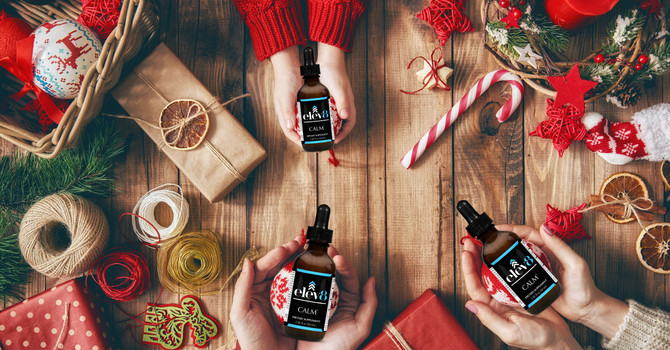As a chiropractor, my goal is to support your whole-body health — not just your spine. And with summer in full swing, I want to shine a little light (pun intended!) on something that often gets overlooked: how the sun affects your health and how to protect your skin smartly and effectively.
Let’s talk about two important but often misunderstood terms: UV Index and SPF.
What Is the UV Index?
The UV Index is a scale from 0 to 11+ that tells you how intense the sun's ultraviolet (UV) rays are at a specific time and place. UV rays are the part of sunlight that cause sunburns, skin aging, and increase your risk of skin cancer.
Here's a quick breakdown:
- 0–2 (Low): Minimal risk. Safe for most people.
- 3–5 (Moderate): Risk of harm from unprotected sun exposure.
- 6–7 (High): Protection is needed – sunglasses, SPF, and shade.
- 8–10 (Very High): Extra protection is essential. Limit sun time.
- 11+ (Extreme): Avoid sun exposure. Seek full shade. Cover up.
Tip: The UV index is highest between 10 a.m. and 4 p.m., and it changes daily. You can check your local UV index through weather apps or even smartwatches. If it’s over 3, sunscreen isn’t optional — it’s essential.
What Does SPF Actually Mean?
SPF stands for “Sun Protection Factor.” It's a measure of how well sunscreen protects your skin from UVB rays — the ones that cause sunburn and contribute to skin cancer.
Here’s where it gets interesting…
- SPF 15 blocks about 93% of UVB rays
- SPF 30 blocks about 97%
- SPF 50 blocks 98%
- SPF 100 blocks 99%
So while it might feel like SPF 100 is dramatically better than SPF 30, the truth is you're only getting 2% more protection — not double the coverage, as the label might imply.
Save Your Money: Why SPF 30 Is Plenty
Many dermatologists (and holistic health pros like me!) agree: SPF 30 is usually all you need — as long as you apply it properly and reapply every 2 hours, especially if you're sweating or swimming.
Buying SPF 70 or 100 can cost more, but doesn't offer a meaningful increase in protection. You're better off investing in a good mineral sunscreen, wearing a wide-brimmed hat, and finding some shade.
A Chiropractor's Perspective
Protecting your skin isn't just about avoiding burns — it’s about preventing inflammation and stress on your body, both of which can affect your immune system, nervous system, and even how your body handles muscle recovery and repair.
As someone who works with patients on total wellness — from posture to nutrition to lifestyle — I encourage you to practice sun safety like you would spinal hygiene. It's daily, it's preventative, and it pays off long-term.
Your Summer Wellness Checklist:
- Check the UV Index before heading out
- Wear SPF 30 (at least) and reapply often
- Don’t waste money on SPF over 50
- Hydrate well — sun + dehydration = muscle fatigue
- Cover up when UV is high (yes, even on cloudy days!)
DIY Natural Sunburn Spray (Better Than Aloe!)
Let’s talk about what happens if the sun gets the best of you — because even with SPF and precautions, sunburns can sneak up.
Most people reach for aloe vera gel, but did you know many store-bought aloe products contain synthetic additives, dyes, alcohols, and preservatives that can actually irritate your skin more?
As someone who loves clean, therapeutic ingredients, I’ve found a natural DIY alternative that not only soothes better — it smells amazing and is refreshingly cooling thanks to peppermint essential oil.
My Go-To DIY Sunburn Spray
What You'll Need:
- 1 small amber glass spray bottle (2–4 oz is perfect)
- Witch hazel (I prefer Thayers Lavender Witch Hazel)
- Lavender essential oil (calming, healing for the skin)
- Peppermint essential oil (cooling, anti-inflammatory)
- Distilled water
Instructions:
- Fill your spray bottle halfway with witch hazel
- Add 10 drops of lavender oil
- Add 15 drops of peppermint oil
- Fill the rest of the bottle with distilled water
- Shake well before each use
- Spray directly on sunburned areas for cooling, calming relief
Note: Always avoid spraying on broken or blistered skin.
A Note on Essential Oil Safety
Please remember — not all essential oils are created equal. Oils sold at big box stores (Walmart, Target, Amazon, etc.) are often diluted, low quality, or contain synthetic fillers that you don’t want soaking into your skin — especially after a burn.
For this spray (and any wellness recipe), I only trust pure, therapeutic-grade oils from brands like:
- Revive
- doTERRA
- Young Living
If you’re ever unsure about the purity of an oil, feel free to reach out — I’m happy to help guide you.
Your skin is your body’s largest organ — and like your spine, it thrives with gentle, intentional care. Let’s keep it healthy, naturally.
Stay safe & sun-smart.



